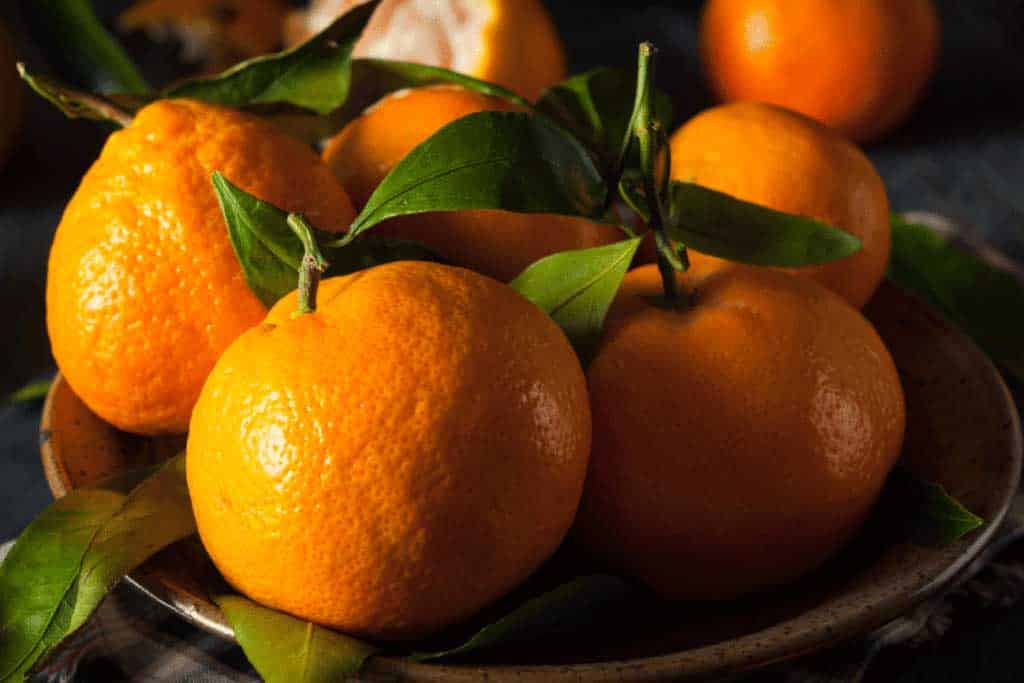[et_pb_section fb_built=”1″ _builder_version=”4.2″][et_pb_row _builder_version=”4.2″ custom_padding=”|||0px||” link_option_url=”http://52.11.233.165/market-report/”][et_pb_column type=”4_4″ _builder_version=”4.2″][et_pb_text _builder_version=”4.2″]
Westlake Weekly Update 10.7.20
Featured Item: Pomegranates
Pomegranate season is upon us, and fans of the “world’s oldest-known fruit” are poised and ready to start working on these red globes. As super as this fruit is, it does make you work for it!
The apple-sized fruit has a thin but tough leathery skin. Beneath that hard exterior lays a plethora of succulently sweet little seeds or technically arils.
When selecting a pom, hold it in your palm, and feel the weight. It should feel heavy for its size. That weight is indicative of ripe juicy fruit. It’s good to note that pomegranates ripen on a tree. Once they are picked, they are ready to eat, so to speak.
When you get a pomegranate home, this is where the work begins. As a kid, we used to just pop open the fruit and eat the sweet-tart arils straight from the white membranes, with not a thought to the juice staining our clothes or hands! Luckily as we got older and wiser…hopefully, we learned a few tricks.
To make eating a pomegranate easier, try this water method.
First, fill a large bowl with water. Using a sharp knife, cut the blossom off the top of the pomegranate.
Next, score the pom into four to five sections by making four cuts down the pomegranate.
Submerge the cut pom into the water and gently break apart the sections.
Using your fingers, separate the arils from the rind gently. As you pry open the membrane, more arils will be exposed.
Using a wooden spoon, knock the outside of the pomegranate a few times to loosen the seeds.
The arils will sink, and the white rind will float. You’ll have to help a few seeds out from their protective membranes, but it’s a lot easier and less messy this way!
Discard the rind and the floating white parts and strain the water. It’s so easy, and now you can enjoy the little fruits of your labor!
Speaking of the fruits, they are power-packed with vitamin C, vitamin K, folate, and potassium. They are also an excellent source of polyphenols, an antioxidant that has been directly linked to the prevention of heart disease and cancer.
Pomegranate season generally runs from October through late December in California. Unopened, they can be stored for up to two months in the fridge. The seeds can be stored fresh for a few days or freeze them for up to six months!
Check out our Instagram on ways to use “pom-tastic” pomegranates!
New crop California navel oranges are due to start by the end of October. The 2020-2021 Navel orange forecast shows at 84 million cartons. Despite being down 5% from last year, we anticipate a good start to the California citrus season.
Don’t forget Cara Caras from our growers in Australia. This fruit is one of the nicest varieties out of this area and can fill some of your shelf space. Call us for great opportunity buys. Valencia oranges continue to be in high demand. The fruit is an excellent quality in the juice and flavor department. The demand is exceeding supply on the 113s. We have some availability of 88s and larger. Pack outs at this time of year are running 40/60s fancy to choice.
They’re here, and they’re a hit! Honey tangerines have started in a big way. The fruit this year did not disappoint. It has arrived very nicely, with excellent sugar and juice content. The peak size is on the 60s, followed by the 70’s and 50s. We have a good supply of “low seed honeys” available. The opportunity is there for some great promotions in October.
Fallglo tangerines from Florida are due to start harvest this week. They are one of the larger varieties of tangerines, with a deep orange easy to peel rind. The first shipments after de-greening will be next week. The peak size being 120s, followed by the 100s and 150s. These sweet tangerine varieties are packed in 36 lb cartons. They are a wonderful option for tangerine sales out here in the west!
Our bulk W. Murcotts and Tango mandarins are finishing up. We expect to go through the end of next week. Our last container is arriving this week. Please give us a ring for remaining availability. We expect the first California mandarins (Satsumas and Clementines) are due to start by the end of October. The imported bagged mandarins have been looking and tasting great. There has been additional supply arriving from our growers in Australia and Chile, just as demand increased last week. We still have a good supply of 2lb and 3lb bags available.
Minneola tangelos are coming to the end of their season. We are so thankful to our growers in Peru and Australia for providing us with an exemplary product we were able to offer.
Our growers in Chile are winding down with lemons, but lemons have started harvesting out of the California desert and Arizona. The peak size continues on the smaller side of
the newest crop. Mexican lemons are also available and looking good! We have good availability on lemons from our various growing regions.
California grapefruit demand continues to exceed supply on the Ruby variety. The season will come to a quick end this week. Sadly, some of our growers lost supply due to the extremely high temperatures we experienced. Stay tuned as some groves are being accessed and will finalize any further availability.
Florida will begin harvest this week. Our supply will peak on the 48s and 40s. Please call us for your overall source of Florida grapefruit on the west coast.
Texas Rio Star grapefruit is just three weeks away! Stay tuned for more information on this popular variety!
BERRIES:
Eat more berries! They are high in fiber and loaded with antioxidants, plus they make your skin look better! Just as you should eat them daily, you’re going to have to call for the day to day updates. Don’t worry…we love hearing from you!
We have bright flavorful raspberries available, as well as strawberries, blackberries, and blueberries. The strawberries are limited due to conditions up north, with a slight increase in price. Domestic Blueberries have been in light supply due to overall production. But, blackberries are becoming readily available as Mexico gets their season started.
TROPICALS:
The current production of Keitt Mangoes out of Mexico has slowed down, but Brazilian Tommy mangoes will start to fill the US. Call for sizes and availability!
[/et_pb_text][/et_pb_column][/et_pb_row][/et_pb_section]

